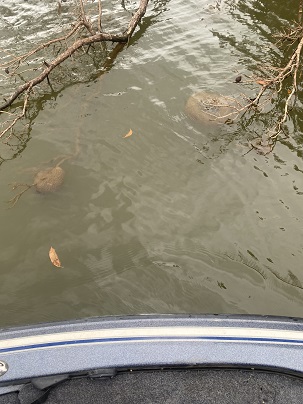
“Jelly Blobs” is a term often used for a type of single cell animals called Bryozoans. They are one of several strange critters you may encounter in lakes and rivers. Several varieties live in freshwater and attach in colonies to twigs, limbs, ropes and dock posts in the water. They look like brown blobs of jelly. If you look at them closely they have small star-like structures that are different groups of the animals, called zooids
Bryozoans Description – Round or oval-shapped blobs of jelly-like material attached to things in the water. Color is shades of mottled browns. They feel solid but slimy to the touch.
Bryozoans Size – The balls can be as big as two feet across and contain 2,000,000 individual zooids. Most are smaller, with a one-foot across blob fairly big in most waters.
Bryozoans Distribution – Different kinds of jelly blobs are found in almost all freshwater worldwide.
What Bryozoans Eat – Normally, diatoms, green algae, bacteria, rotifers, protozoa, tiny crustaceans or nematodes are in their diet.
Bryozoan Reproduction – Asexual reproduction is the norm, through budding to form new animals, but sexual reproduction does take place.
Bryozoans Attraction to Light – none
Bryozoans Life Cycle – A single zooid can attach to something in the water and reproduce by budding, building a colony that looks like the blob you see. Some die off in the winter, with just a few individuals surviving to start a new colony in the spring.
Bryozoans Problems – These blobs may look and feel bad, but they actually indicate good water quality.
Jelly Blobs or Bryozoans are common and do not cause problems. They indicate good water quality. These tiny animals that are similar to corals should not bother you unless they are on your dock ladders and ropes.